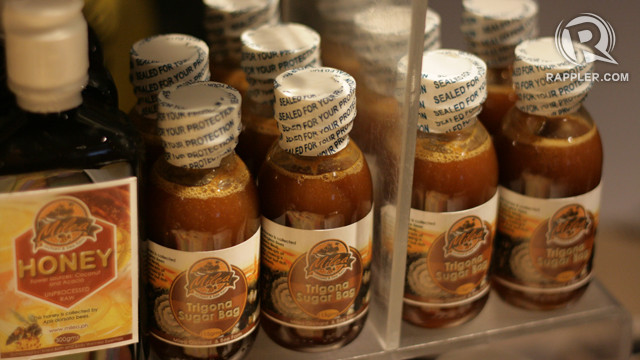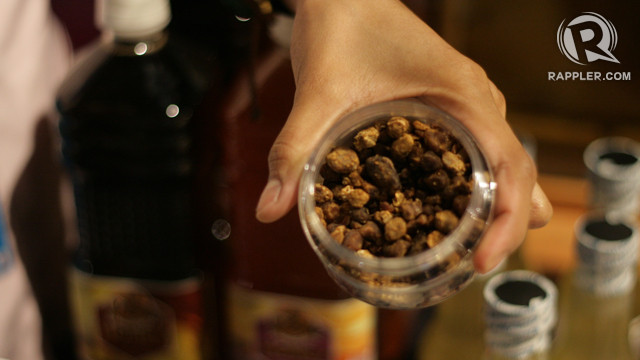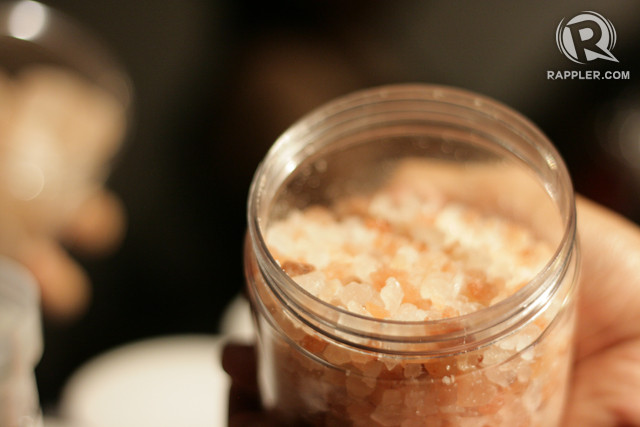SUMMARY
This is AI generated summarization, which may have errors. For context, always refer to the full article.

MANILA, Philippines – I have a confession to make: the only thing I know about the food I eat is its price and whether I like it or not. I do not know where it comes from. I do not dare to imagine what it went through before reaching my plate.
Documentaries have told me that chemicals that shoo away insects stay on the skin of my vegetables but I do not bother myself with the thought when my plate is beautifully piled up with Greek salad and feta cheese.
When it comes to where we get our food, I think about how unfair the entire system is. The food industry is full of products that are bad for us. So many people reaping profit from consumers’ basic need for food put health after salability. There are too few people we can trust.
Let me introduce you to them.
Foodprint and ‘locavores’
Foodprint is the portion of our ecological footprint that consists of the impact we make on the earth by the food that we eat. It consists of several things:
- Carbon – The production, processing and transportation of food releases carbon into the atmosphere.
- Land area – It is estimated that a third of the earth’s surface is used for food. Producing food requires croplands, grazing land and land for warehouses for packaging and storing food. The need for land area occasionally leads to clearing of forests as well.
- Fishing grounds and fish.
- Water – Raising food, both plants and cattle, requires this resource.
- Food waste – A new breed of ecologically conscious consumers keen on reducing their foodprint has converted into becoming ‘locavores.’
Vore comes from the latin word vorare, meaning “to devour.” On first hearing this, I thought locavores were people who ate only low-calorie food. They are not. Neither are they people who eat locals. They are people who eat locally-grown food.

Eating locally reduces your carbon footprint since your food does not need to travel very far to reach you. At the same time, it stimulates the local economy and the food is usually more fresh. Going hand in hand with eating locally is eating seasonably. If the food on your table is out of season, it means it has traveled far just to get there. If you are the type of person who is not so picky about food, eating in season has a perk: what’s on your plate will always be a surprise.
Ways to reduce your foodprint:
- Start a mini-compost. It’s simple: you just need a container, soil, worms and food waste; except meat since worms don’t eat that.
- Plan your meals so that nothing is wasted.
- Get creative with leftovers. You can still use them to whip up an amazing meal.
- Support enterprises that are foodprint-friendly.
Foodprint-friendly enterprises
There is a growing number of ecologically-conscious enterprises in the city. They flocked the food fair hosted by The Mind Museum on June 23.
One of the very first of such enterprises is GK Enchanted Farm. They sell cheese from locally grown, grass-fed carabaos and goats.


Real Girl, Toy Kitchen born just two months ago, is a home-based food service startup that makes dips, soups and food such as chili con carne. They source their raw materials from local farmers. They use glass bottles and biodegradable plastic.
Gana Vida, in Spanish meaning “gaining life,” sells chicken, pork, beef, bangus and organic food products. One such product is Quinua or Quinoa, a grain-like crop grown primarily for its edible seeds, which originated from Ecuador and Peru.

Founder Dr. Evelyn Taboada, a chemical engineer and recipient of the Alejandro M. Yao Intellectual Property Award for Visayas and Mindanao in 2012, found a way to make use of parts of the mango previously considered food waste: starch from the seed and a source of leptin from the peel.
Moveable Feast encourages collaboration among consumers, farmers, local artisans, chefs, field experts and small businesses with farm-to-table experiences.
Ministry of Mushrooms Inc. is a start-up provider of gourmet mushrooms, mushroom products and related services that has its farm in Lipa, close enough to deliver fresh to the metro.

Meeting all these people, I stood back in awe. I think about how my day-to-day eating habit is like: fastfood for lunch and take-out meal for dinner, something most yuppies can relate to. I used to think a fast-paced lifestyle came at the cost of good and healthy eating. Yet I am surrounded by people who proved me wrong. – Rappler.com
Add a comment
How does this make you feel?
There are no comments yet. Add your comment to start the conversation.